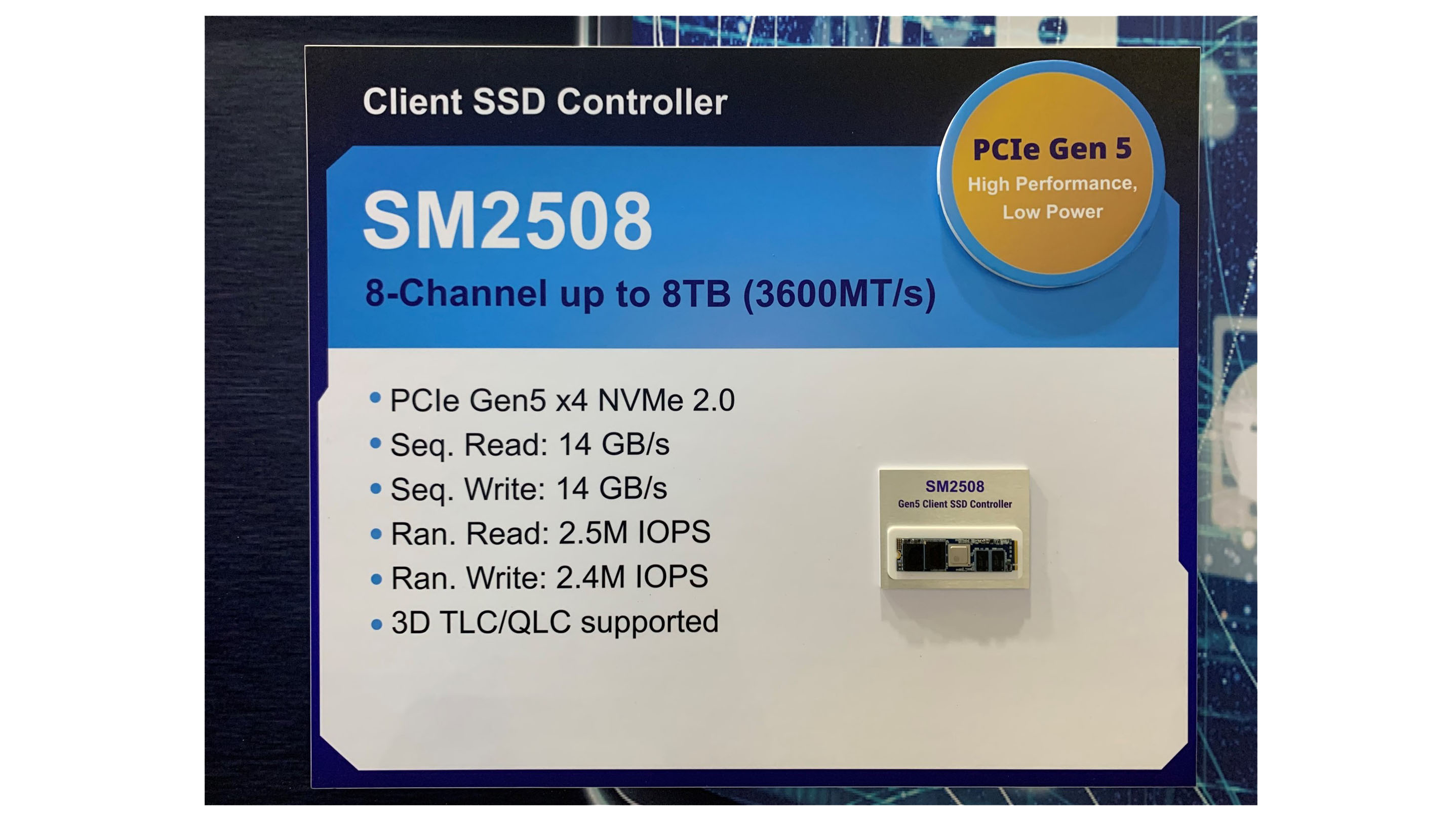
Faster and cooler.
We all love to see faster SSDs. Price aside, the problem with PCIe 5.0 SSDs is they get too hot. That means they need slabs of motherboard metal to cool them, or require creative cooling solutions that work around the relatively tiny M.2 2280 form factor.
SSD manufacturers seem to be keeping checks on SSD power consumption and temperatures high in their minds. Silicon Motion is set to compete with Phison with its SM2508 controller, and revealed some details at the 2023 Flash Memory Summit (via Anandtech).
Other than offering excellent performance potential, the real highlight of the SM2508 is its reported power consumption of just 3.5W. The controller is the most power-hungry component of an NVMe SSD, and the hottest. When SSDs with the SM2508 controller roll out in the coming months, the hope is they won’t require extravagant cooling solutions. Fingers crossed.
PCIe 5.0 drives are effectively impossible to install in notebooks. The idea that an SSD can approach the TDP of some notebook CPUs is ludicrous. Hopefully SM2508 equipped drives will be mobile-friendly, likely with firmware and components that bring PCIe 5.0 SSD power consumption to just a few watts, and not 10 or more.
(Image credit: Future)
Best CPU for gaming: The top chips from Intel and AMD.
Best gaming motherboard: The right boards.
Best graphics card: Your perfect pixel-pusher awaits.
Best SSD for gaming: Get into the game ahead of the rest.
The SM2508 delivers great performance too, with up to 14GB/s read and write speeds. Those are the headline numbers SSD vendors will thrust in front of you, but just as important are the random read and write IOPS numbers, with up to 2.5 million and 2.4 million operations per second respectively.
The SM2508 SSD controller features eight NAND channels supporting an interface speed of up to 3600 MT/s per channel, it supports NVMe 2.0 and it will support TLC and QLC NAND. While QLC lags TLC in performance, the potential is there for more affordable 8TB 2280 drives for bulk storage use cases.
But let’s not get too excited. I spotted a prototype or concept of an SM2508 drive at Computex, and the XPG Neonstorm was shown with an integrated watercooler (seriously!), which would seem to go against Silicon Motion’s claims of low TDP, but then again this was an early concept and it probably wasn’t even functional.
(Image credit: Future)
I’m a firm believer that the M.2 form factor actually sucks. High-end drives with ridiculous cooling solutions, capacity limitations and fiddly installation are one thing, but then add motherboard complexity (and expense) and placement next to—or under a GPU and I just don’t like it at all. I want to see 2.5-in drives make a comeback. If nothing else it will allow future SSDs to be cooled more effectively.
Who knows, maybe SSDs with the Silicon Motion SM2508 controller will be able to earn spots on our list of best Gaming SSDs.
Silicon Motion is reportedly aiming for a late 2023 or early 2024 launch. Interestingly, we are yet to see PCIe 5.0 SSDs from giants like Samsung or Western Digital. You just know they’re working on them.






